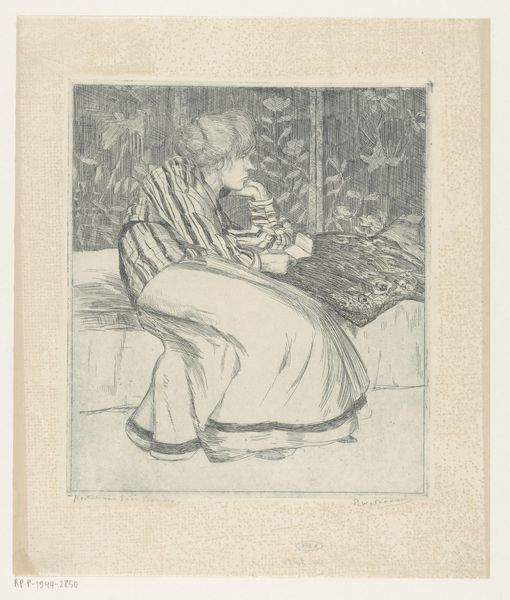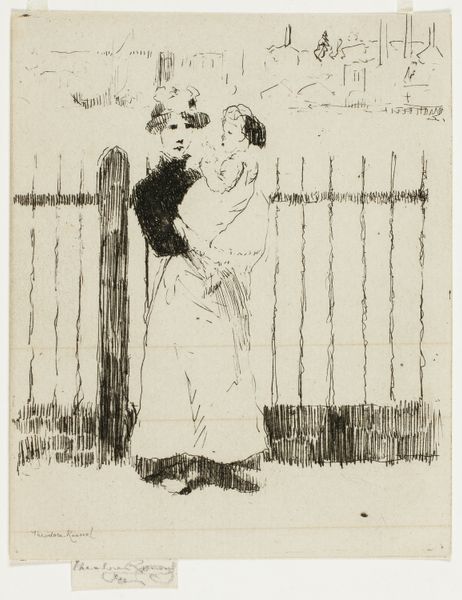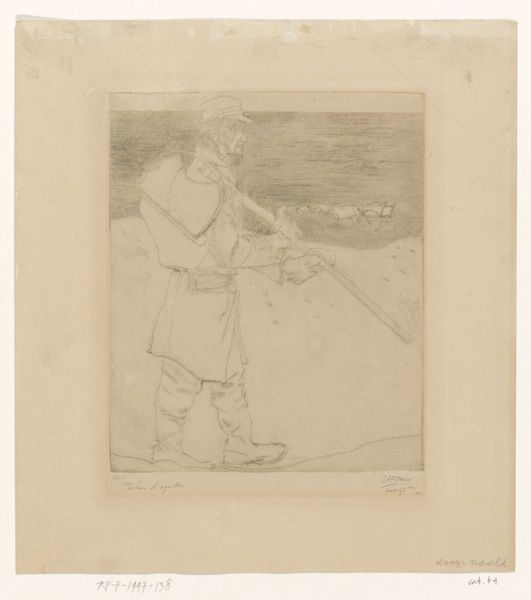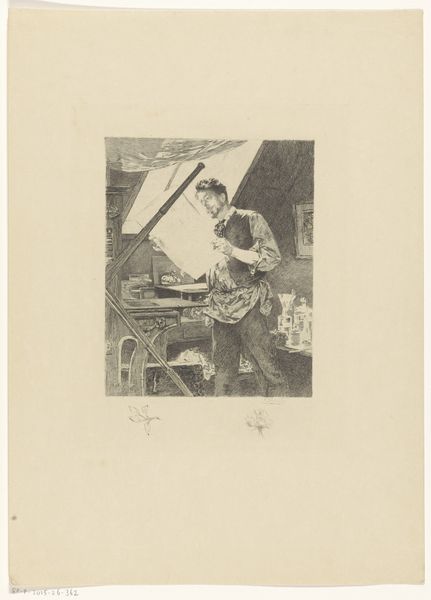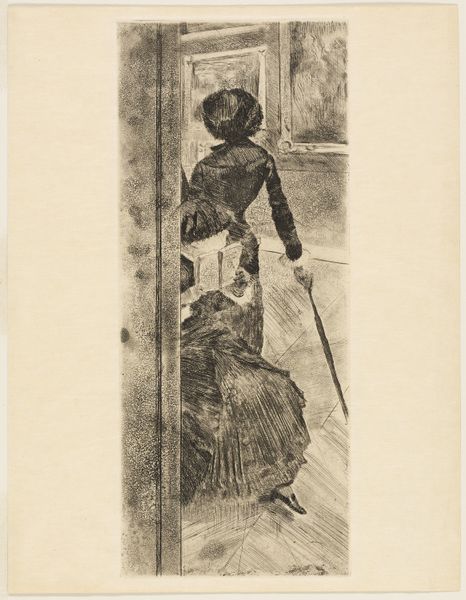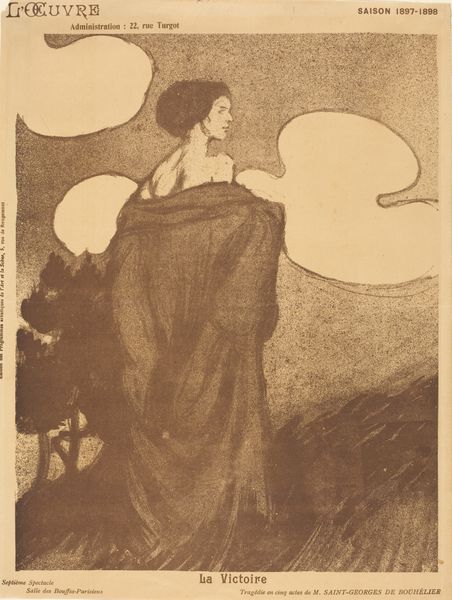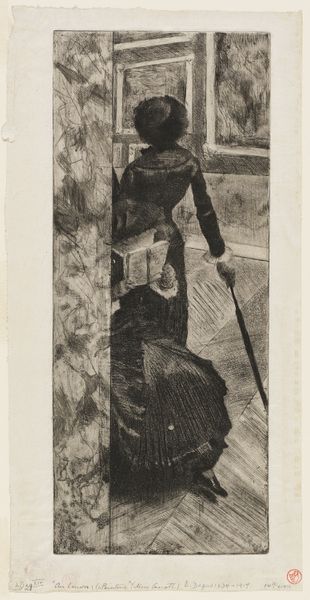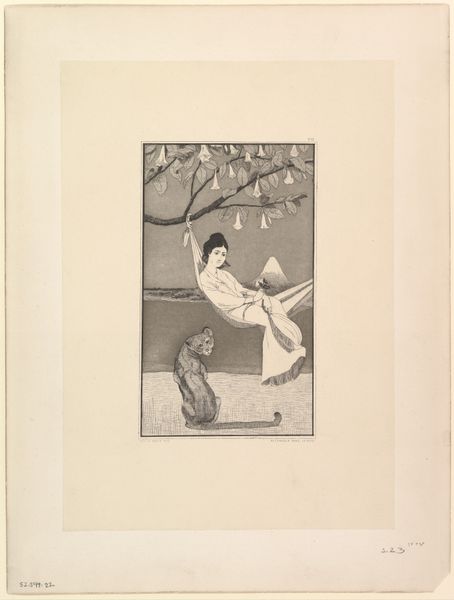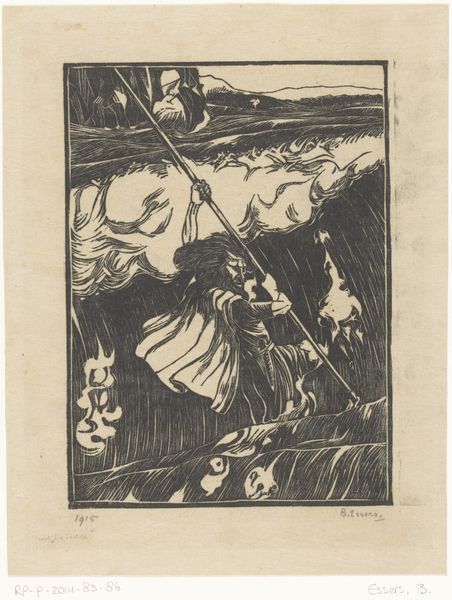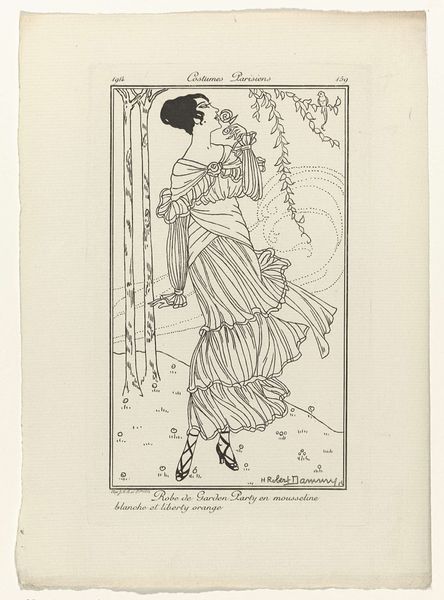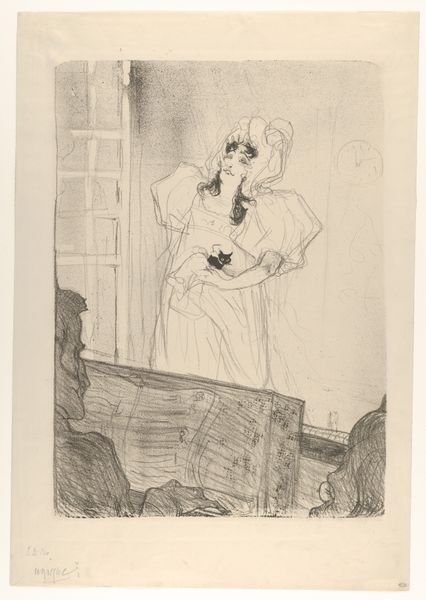
Dimensions: 291 × 127 mm (image/plate); 370 × 283 mm (sheet)
Copyright: Public Domain
Curator: We're standing before Helen Hyde's evocative print, "A Rainy Night," created in 1906. Hyde was an American artist who spent much of her career in Japan, deeply influenced by the Ukiyo-e tradition. Editor: It has this wonderfully somber mood. The soft, muted tones create such a gentle atmosphere. Is it just me, or does it seem both intimate and detached? Like we are watching a memory. Curator: The composition is striking. The use of the vertical format focuses our gaze on the two figures, likely a mother and child, huddled beneath a large umbrella as they walk through the rain. Editor: Absolutely. There's a beautiful fragility depicted here. The woman and child are walking forward, seemingly unprotected in this weather; their posture denotes an understanding of resilience within vulnerable circumstances. Curator: Hyde's biography is fascinating in that it gives us further understanding. She carved out a space for herself as a female artist in a time dominated by men. This print provides an intimate look at the experience of women raising families while navigating different cultural landscapes. Editor: That makes a big difference, because looking closely you also start seeing subtle issues of colonialism, about how power affects representation, not only of the culture in which Hyde lived, but the people she chose to focus on. She wasn’t a neutral observer; her Western gaze had an impact. Curator: Indeed, situating her work in the context of Japonism allows us to analyze the socio-political dynamic during that time. "A Rainy Night" acts as a powerful portal, making us question our preconceived ideas regarding the roles that women play within their respective cultural landscapes. Editor: Ultimately, "A Rainy Night" has moved me in that it demonstrates how visual culture serves as an essential device in documenting intersectional global stories. It's more than just an etching. Curator: Yes, I agree. This piece provides rich ground to consider the complex exchanges and power dynamics embedded within early 20th century artistic circles.
Comments
No comments
Be the first to comment and join the conversation on the ultimate creative platform.
